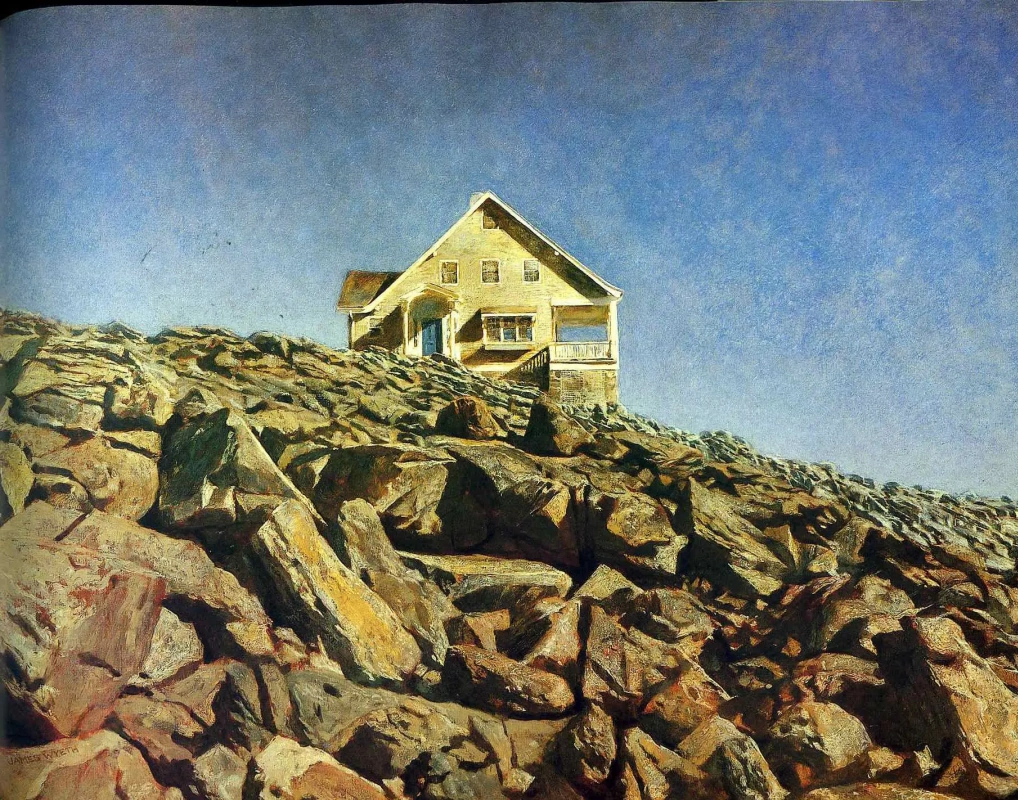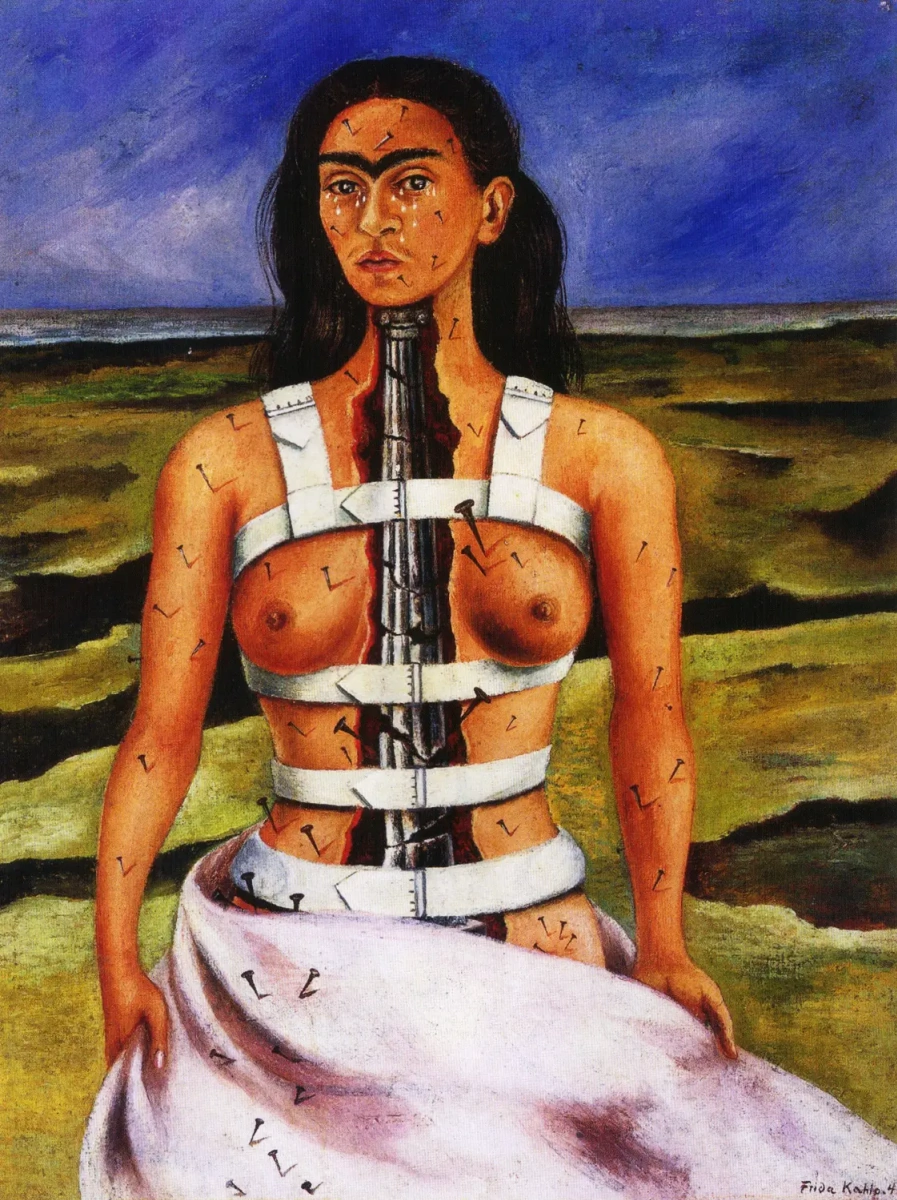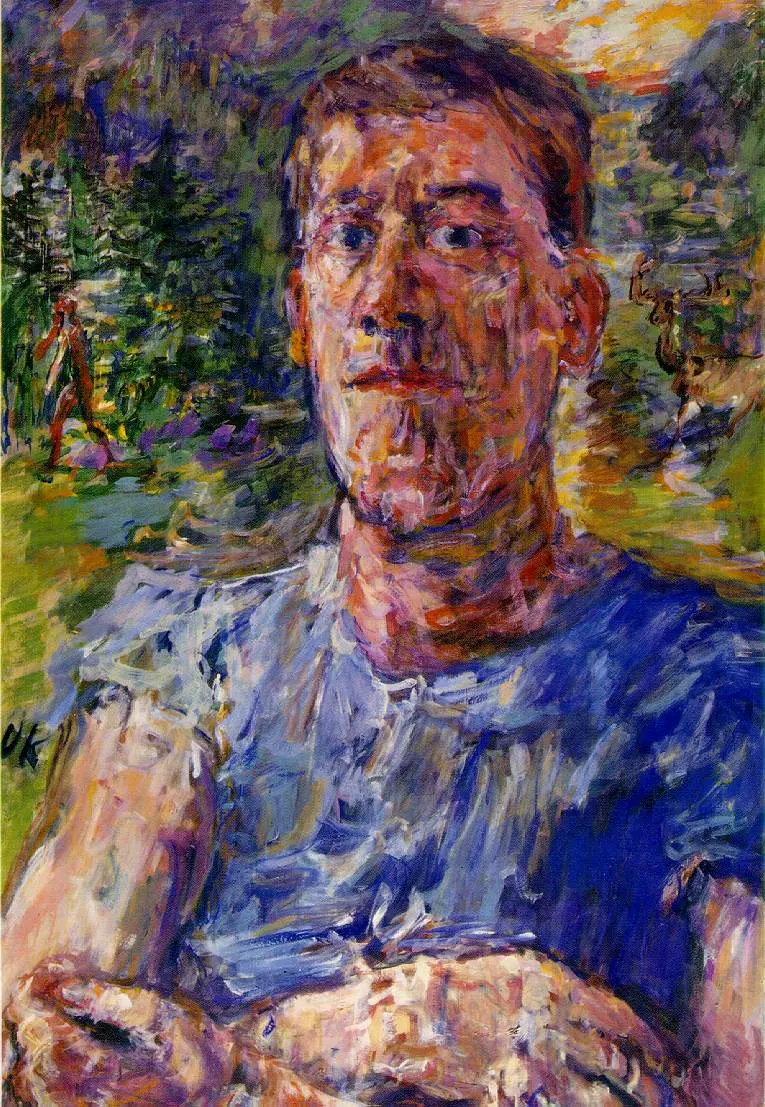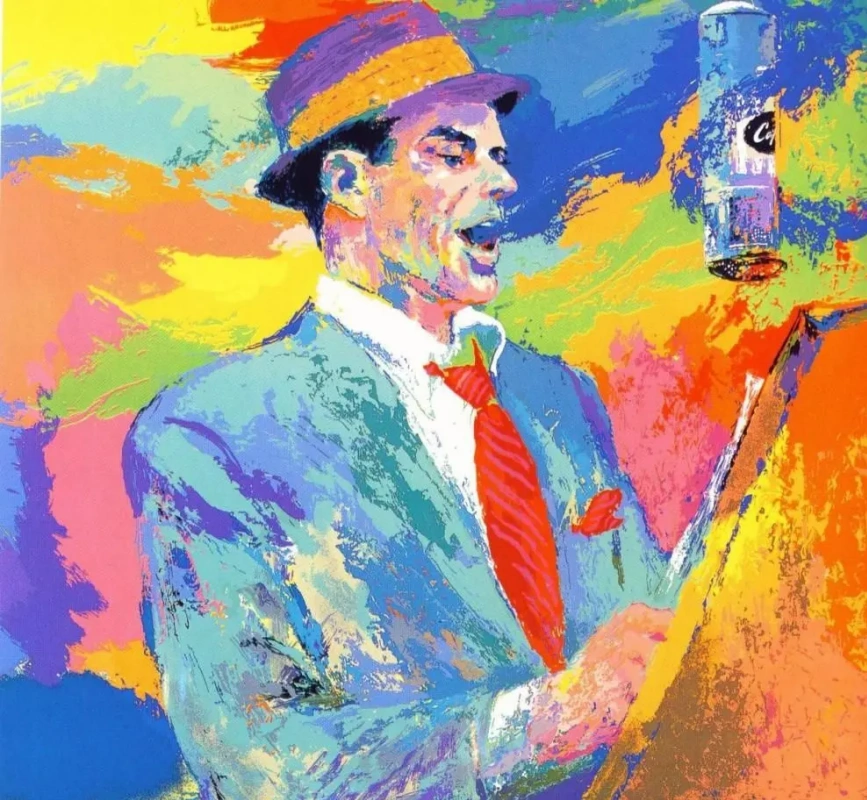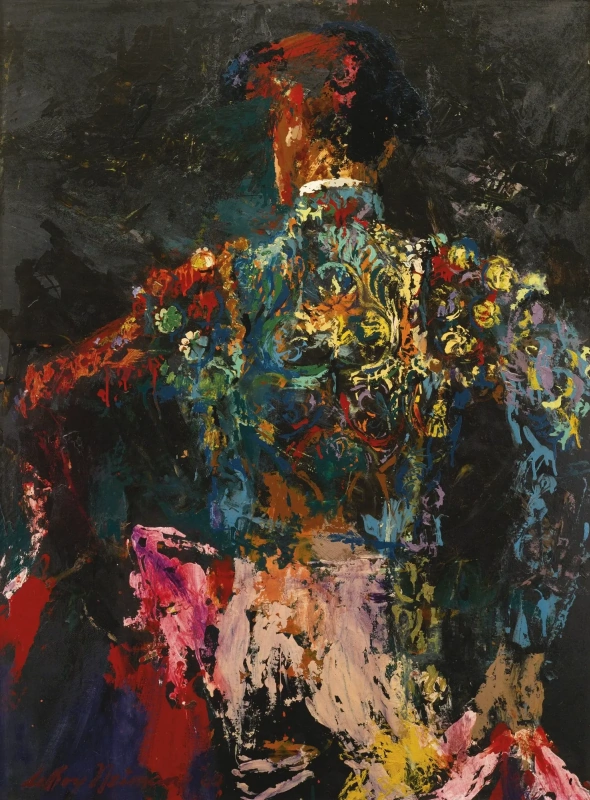Among famous artists, you can find many characters with difficult fates. Fierce criticism, illness, political and natural disasters, episodes when the whole world seems to lead war against you. They did not break, they survived, they have overcome everything.

Marc Chagall
Over the city
1918, 141×197 cm
In 1920, Marc Chagall was forced to leave Viciebsk for Moscow. The Soviet government, which initially gave the young artist carte blanche, no longer understood his work. The public considered Chagall’s painting strange. Pupils fled from him to Kazimir Malevich en masse. The artist left his hometown behind, though he loved it very much, as well as the Viciebsk School of Painting, which he considered his life’s work. It seemed to 33-year-old Chagall that it was all over. In fact, it was an escape.
Marc Chagall overcame it. He worked as a graphic designer in a theatre, taught street children to draw in a labour colony near Moscow. But the most important thing, he did not deviate a single step from his creative principles, did not give an inch of canvas to fashionable Suprematism or profitable socialist realism .
In 1923, he moved to Paris, where he was recognized as a genius by everyone: the establishment, the public, Pablo Picasso. He received French citizenship, the prestigious Erasmus Prize. He became a Knight of the Legion of Honour, received a personal exhibition in the Louvre during his lifetime, married twice, and lived to be 97 years old.
Also read
Enemies: Marc Chagall – Kazimir Malevich
Rockwell Kent
Heavy heavy hangs over thy head
1946, 23×30.5 cm
For many years, the American artist, writer and traveller Rockwell Kent was the favourite of the nation. The audience adored him, and even forgave him the fact that Kent was a member of the socialist party and openly sympathized with the USSR.

The artist in 1939. Photo Source — commons.wikimedia.org
However, during McCarthyism, Kent was declared a communist. His books were removed from public libraries, the doors of museums and galleries were closed to him, and his fame was rapidly fading. By the 60s of the last century, Kent was practically ruined.
The River Sable. Winter
1960, 72×100 cm
In 1969, lightning struck his house. A fire broke out, the house was half burnt out, many rare books, paintings, unique items that he had brought from his travels were destroyed.
Rockwell Kent overcame it. An educated architect, the very next morning he took on the drawings. In a few months he built a new house on the old foundation. He was 86 years old at that moment.
Rockwell Kent overcame it. An educated architect, the very next morning he took on the drawings. In a few months he built a new house on the old foundation. He was 86 years old at that moment.
The House Of Kent
1971, 76.2×101.6 cm
Frida Kahlo
The broken column
1944, 43×33 cm
When Frida was 17, she got into a car accident: the bus in which she was travelling collided with a tram. Her spine was broken in three places. A triple fracture of the pelvis, 11 fractures of the bones of the right leg, broken collarbone and ribs, a crushed foot, a metal handrail pierced Frida’s abdomen — in the hospital where she was brought, the doctors were quite surprised that she was still alive.
Bus
1929, 26 cm
She was bedridden for about a year. Steel wires and corsets, dozens of operations, constant pain were ahead.
Frida Kahlo overcame it. Already at the hospital, she asked for paints and brushes to be brought to her (her parents also ordered a stretcher that allowed her to paint while lying down). Frida lived a short and difficult, but extremely bright life.
Self-portrait
1948, 50×39.5 cm
She was an openly bisexual, convinced communist, alcoholic, potty mouth and rebel, her whirlwind romances (including with Diego Rivera, whom she married twice) were discussed not only in Mexico, but also in the United States. Her paintings became sensations in Paris, London and New York, an asteroid, tequila and Hollywood films were named after her. The funeral of Frida (she died at the age of 47) was attended by the President of Mexico. She became the first Mexican woman to be featured on a US postage stamp — an outstanding case given her political views.
Boris Kustodiev
Self portrait at the window
1899, 55×37 cm
Boris Kustodiev was only 31 years old when he was diagnosed with a spinal cord tumour. At the course of the operation, it became clear that the nerves were to be cut and the choice was to keep the legs or arms mobile. Boris Mikhailovich himself was under anaesthesia and could not make a decision. His wife decided for him: "Leave his hands! An artist can’t do without hands! He’ll not be able to live." He moved in a wheelchair for the rest of his life.
Boris Kustodiev overcame it. He continued to teach, it was during the period when he painted his most life-affirming canvases. Until his last days, Kustodiev remained optimistic and had a sense of humour. Weak, almost motionless, he loved to receive guests and invariably urged them not to leave early. And when he was nevertheless taken away on his armchair to his bedroom, he joked: "Don't break me, I’m made of glass!"
Boris Kustodiev overcame it. He continued to teach, it was during the period when he painted his most life-affirming canvases. Until his last days, Kustodiev remained optimistic and had a sense of humour. Weak, almost motionless, he loved to receive guests and invariably urged them not to leave early. And when he was nevertheless taken away on his armchair to his bedroom, he joked: "Don't break me, I’m made of glass!"
Artemisia Gentileschi
Judith beheading Holofernes
1612, 199×162.6 cm
When the Rome-born Artemisia Gentileschi was 22, she was raped by her teacher, the Florentine artist Agostino Tassi. Artemisia’s father sued Tassi. The trial, which lasted 7 months, was more humiliating for the girl than the rape itself. The incident received wide publicity, she was subjected to endless interrogation and even torture (in the 17th century, testimony given under torture was automatically considered truthful). All this time, Artemisia tried to justify Tassie — in spite of everything, she felt sympathy for him and hoped that the rapist would eventually marry her. This never happened: it turned out that Tassi was already married, the court sentenced him to a year in prison. The humiliation and torment were in vain: the girl was left with nothing.
Self-portrait as Saint Catherine
1615, 71×71 cm
Artemisia Gentileschi overcame it.
She got married, went to Florence, became the first woman in history to be elected to the Academy of Fine Arts in Florence. She made her name, became famous in Rome, Naples, and later abroad, became an icon of feminists and the embodiment of the idea of gender revenge. Her most famous painting was Judith Beheading Holofernes. Artemisia painted Judith from herself, Holofernes, of course, from Agostino Tassi.
She got married, went to Florence, became the first woman in history to be elected to the Academy of Fine Arts in Florence. She made her name, became famous in Rome, Naples, and later abroad, became an icon of feminists and the embodiment of the idea of gender revenge. Her most famous painting was Judith Beheading Holofernes. Artemisia painted Judith from herself, Holofernes, of course, from Agostino Tassi.
Henri Matisse
Self-portrait
1900, 84×69 cm
In 1941, 72-year-old Matisse was diagnosed with bowel cancer. He underwent a serious operation, which, as he hoped, could give him a couple more years of life. The doctors succeeded in the seemingly impossible — Henri Matisse lived for another 13 years. However, he was no longer able to recover. For the rest of the years, he was practically bedridden and too weak to work as before.
Henri Matisse overcame it. He has not lost his love for life or interest in work. Matisse could not stand at the easel, so he attached charcoal to a stick and painted with this improvised pointer.
Henri Matisse overcame it. He has not lost his love for life or interest in work. Matisse could not stand at the easel, so he attached charcoal to a stick and painted with this improvised pointer.

Henri Matisse in his studio. Photo Source
It was difficult for him to mix colours, and he cut out silhouettes from paper covered with gouache. This method became almost an independent chapter in his creative biography. "Instead of drawing an outline and filling it with colour, I paint directly in colour… I succeded in achieving a shape that is naked to the core," said Matisse. Creating appliqués, he seemed to be reassembling his broken life by pieces.
Illustration for the book "Jazz"
1943, 55×85 cm
Oskar Kokoschka
Self-portrait of a Degenerate Artist
1937, 110×85 cm
When Oskar Kokoschka was 26, he met Alma Mahler, the famous Viennese femme fatale, muse and widow of Gustav Mahler. Their exhausting, pathological, painful romance lasted three years. Then Alma gave up and fled from the artist to the architect Walter Gropius. Oskar’s already unstable psyche was much affected.
Double portrait: Oscar Kokoshka and Alma Mahler
1913, 100×90 cm
In 1914, Kokoschka went to war, partly because he liked the way he looked in a dragoon helmet, but mostly to distract himself, forget Alma.
A year later, he was wounded in the head on the Galician front and lost his memory — for some time he was presumed dead.
Upon returning home, Oskar Kokoschka was declared mentally ill.
A year later, he was wounded in the head on the Galician front and lost his memory — for some time he was presumed dead.
Upon returning home, Oskar Kokoschka was declared mentally ill.
A knight errant (Self-portrait)
1915, 180×89.5 cm
The worst thing was that memory returned, as well as the thoughts of Alma.
Bride of the wind
1914, 220×181 cm
Oskar Kokoschka overcame it. He commissioned the Munich artist Hermine Moss a doll to be a copy of Alma Mahler. Kokoschka accompanied the order with detailed instructions: he asked Hermine to pay special attention to the "curves of the female body". He also wondered whether "it is possible for the doll to open its mouth". For some time he appeared with his "companion" at social events, brought the doll to receptions, fanned it in the box of the Vienna Opera. Then Kokoschka cut off its head.
Some oddities did not prevent Kokoschka from achieving success. He was a professor at the Dresden Academy, lived comfortably, during his lifetime he was considered almost a genius. At the age of 50, he met Olda Palkovská in Prague, whom he married and was happy with her for another 43 years — until his death.
Some oddities did not prevent Kokoschka from achieving success. He was a professor at the Dresden Academy, lived comfortably, during his lifetime he was considered almost a genius. At the age of 50, he met Olda Palkovská in Prague, whom he married and was happy with her for another 43 years — until his death.
Francis Bacon
Self-portrait
1956, 78×54 cm
In 1933, virtually unknown, but ambitious artist Francis Bacon organized his personal exhibition in London. He failed to sell a single work, his only result was a devastating review in The Times. Three years later, Bacon sent several paintings to the International Surrealist Exhibition, but the curators rejected them, considering them "not surreal enough". The disappointed artist destroyed almost everything he had painted by this time and for some time did not touch the canvas.
Francis Bacon overcame it. He forced himself to work again and soon found the style that made him one of the most recognizable, sought-after and expensive artists of the 20th century. He was one of the few to gain recognition during his lifetime. Bacon remained an extremely self-critical creator to the very end. He continued to destroy his paintings, which he considered unsuccessful. But not so often, because now he had to buy them back for tens of thousands.
Francis Bacon overcame it. He forced himself to work again and soon found the style that made him one of the most recognizable, sought-after and expensive artists of the 20th century. He was one of the few to gain recognition during his lifetime. Bacon remained an extremely self-critical creator to the very end. He continued to destroy his paintings, which he considered unsuccessful. But not so often, because now he had to buy them back for tens of thousands.
LeRoy Neiman
Lady Liberty
1986, 96.3×77.5 cm
In 1942, LeRoy Neiman came of age and went to fight in Europe. In his memoirs, he recalled being given condoms before the Normandy landing. It was a practical solution: the condoms had to be pulled over the barrels to prevent sand and water spoiling the weapon. But everyone, of course, was joking recklessly, realizing that many will never have to use the "equipment" for its intended purpose. "It's as if the nightmares by Hieronymus Bosch came to life in reality," he wrote about this experience.
LeRoy Neiman overcame it. He not only survived, the war brought him considerable dividends. First, he realized how fragile and fleeting life is, and how stupid it is to waste it on an unloved business. And secondly, he received a veteran scholarship at the Art Institute in Chicago. Known primarily as an illustrator for Playboy magazine, Neiman quickly achieved success.
LeRoy Neiman overcame it. He not only survived, the war brought him considerable dividends. First, he realized how fragile and fleeting life is, and how stupid it is to waste it on an unloved business. And secondly, he received a veteran scholarship at the Art Institute in Chicago. Known primarily as an illustrator for Playboy magazine, Neiman quickly achieved success.
His works were exhibited in museums, his royalties aroused envy in academic circles, Frank Sinatra and Muhammad Ali were proud of his friendship. Official artist of five Olympiads, philanthropist, professor of painting, he died at the age of 91, becoming the embodiment of the American Dream.
Zinaida Serebryakova
At the Dressing-Table. Self-Portrait
1909, 75×65 cm
The 1917 October revolution in Russia found Zinaida Serebryakova in her family estate in Neskuchny village. Anticipating imminent pogroms, the Serebryakovs fled to Kharkiv. The estate was plundered and burned, Zinaida Yevgenyevna’s husband was arrested. Shortly after his arrest, he died of typhus. The artist left with four children — without a livelihood, practically in the ashes.
House of cards
1919, 65×75.5 cm
Zinaida Serebryakova overcame it. Avoiding socialist realism
and fashionable avant-garde
trends, she made her life through odd jobs in Kharkiv, and later in Petrograd. And in 1924, she managed to get to Paris, where she continued to work for wear and tear. At first, she had a hard time in France. Somehow, she managed to take two children from the USSR, two more remained behind the Iron Curtain (the artist saw them almost 40 years later). Konstantin Somov, who saw Serebryakova in Paris, wrote: "She is so pitiful, unhappy, inept, everyone offends her."
Baker from the Lepic Street
1927, 92×65 cm
She did not give up, continued to work frantically and achieved recognition — first abroad, and then in the Soviet Union. During the Thaw, her exhibitions were successfully held in Moscow, Leningrad and Kyiv. However, Zinaida Yevgenyevna never came back to the USSR.
Ivan Myasoyedov
Self-portrait
1900-th
, 46×43 cm
Ivan Myasoyedov, the son of the famous itinerant Grigoriy Myasoyedov, the same who modelled for Repin as Ivan the Terrible, was in no hurry to open his arms to the Soviets. After the revolution, he served in Denikin’s army as a kind of cultural attaché. In the Crimea, he was arrested by the Chekists and thrown into jail in order to be shot in the morning.

Ivan Myasoyedov. A still from The Empress’s Games movie (1929)
Ivan Myasoyedov overcame it. A man of remarkable strength and a professional athlete, he broke the bars with his bare hands (at least that’s what he said himself) and fled to Germany.
Street in Berlin
1920
Ivan Myasoyedov was not a bad artist, he has dozens of charming landscapes and several nice portraits. However, he became famous in another field; Ivan was the most famous counterfeiter in the history of mankind. He drew pounds and dollars "as if they were alive"! Myasoyedov was repeatedly arrested, but he was released every time — this talent was too valuable. During the Second World War, Hitler willingly used his services — the banknotes drawn by Myasoyedov (also known as Zotov) were supposed to undermine the economies of England and the United States. Ivan Myasoyedov did not like the Nazis that much, but they seemed to him the lesser evil than the Bolsheviks.
Crowd of demons
1920-th
Thomas Eakins
Self-portrait
1902, 50.8×40.9 cm
Thomas Eakins, artist, photographer and educator, was recognized as a classic of American realism
after his death. During his lifetime, he had to deal with misunderstanding, because his teaching methods seemed too progressive to his contemporaries. Eakins was one of the first to abandon plaster statues as models and introduced the practice of nude posing in mixed classes, where both boys and girls studied.
Nude
1876
When Thomas Eakins was the head of the Pennsylvania Academy of Fine Arts, in one of these classes, he ordered a sitter to remove his loincloth — by the standards of 1886, it was a shocking expression of free thinking. The artist was fired from his post of director hammer and tongs.
Thomas Eakins overcame it. He left with his head held high, followed by many of his disciples. Soon, Eakins was teaching at the Drexel Institute in Philadelphia. Well, he was also fired from there — for the same reason.
Thomas Eakins overcame it. He left with his head held high, followed by many of his disciples. Soon, Eakins was teaching at the Drexel Institute in Philadelphia. Well, he was also fired from there — for the same reason.
Edvard Munch
Self-portrait after Spanish influenza
1919, 150.5×131 cm
Edvard Munch was an extremely sickly character. "Disease, madness and death looked into my cradle and accompanied me throughout my life," he said. Alcohol, drugs, paranoia, the painful romance with Tula Larsen, which ended with her attempt to commit suicide and the artist’s shot finger — all this did not improve his health at all.
In 1918, Munch caught the Spanish flu, which raged in Europe and claimed millions of lives.
In 1918, Munch caught the Spanish flu, which raged in Europe and claimed millions of lives.
Edvard Munch overcame it. A man who could not boast of either a high level of social responsibility or strong immunity recovered and lived to 80. In memory of this episode, he left two self-portraits — with the Spanish flu and after it.
Monet and Renoir, Repin and Yablonska, steadfastly continued to paint even in their weakness… Aubrey Beardsley knew he was doomed since he was 7… The list of those who created art despite their fateful circumstances can be continued on and on. Yes, they overcame it.
Artists mentioned in the article









